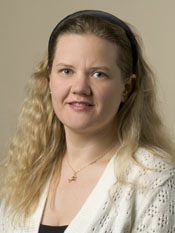Program Information
Shared Space Fosters Didactic and Professional Learning Across Professions for Medical and Physics Residents
S Dieterich*, J Perks , R Fragoso , UC Davis Medical Center, Sacramento, CA
Presentations
SU-E-E-3 (Sunday, July 12, 2015) 3:00 PM - 6:00 PM Room: Exhibit Hall
Purpose: Medical Physicists and Radiation Oncologists are two professions who should be working as a team for optimal patient care, yet lack of mutual understanding about each others respective role and work environment creates barriers To improve collaboration and learning, we designed a shared didactic and work space for physics and radiation oncology residents to maximize interaction throughout their professional training.
Methods: Physician and Physics residents are required to take the same didactic classes, including journal clubs and respective seminars. The residents also share an office environment among the seven physician and two physic residents.
Results: By maximizing didactic overlap and sharing office space, the two resident groups have developed a close professional relationship and supportive work environment. Several joint research projects have been initiated by the residents. Awareness of physics tasks in the clinic has led to a request by the physician residents to change physics didactics, converting the physics short course into a lab-oriented course for the medical residents which is in part taught by the physics residents. The physics seminar is given by both residency groups; increased motivation and interest in learning about physics has led to several medical resident-initiated topic selections which generated lively discussion. The physics long course has changed toward including more discussion among residents to delve deeper into topics and study beyond what passing the boards would require. A supportive work environment has developed, embedding the two physics residents into a larger residents group, allowing them to find mentor and peers more easily.
Conclusion: By creating a shared work and didactic environment, physician and physics residents have improved their understanding of respective professional practice. Resident-initiated changes in didactic practice have led to improved learning and joint research. A strong social support system has developed, embedding physics residents into a larger peer group.
Contact Email:


